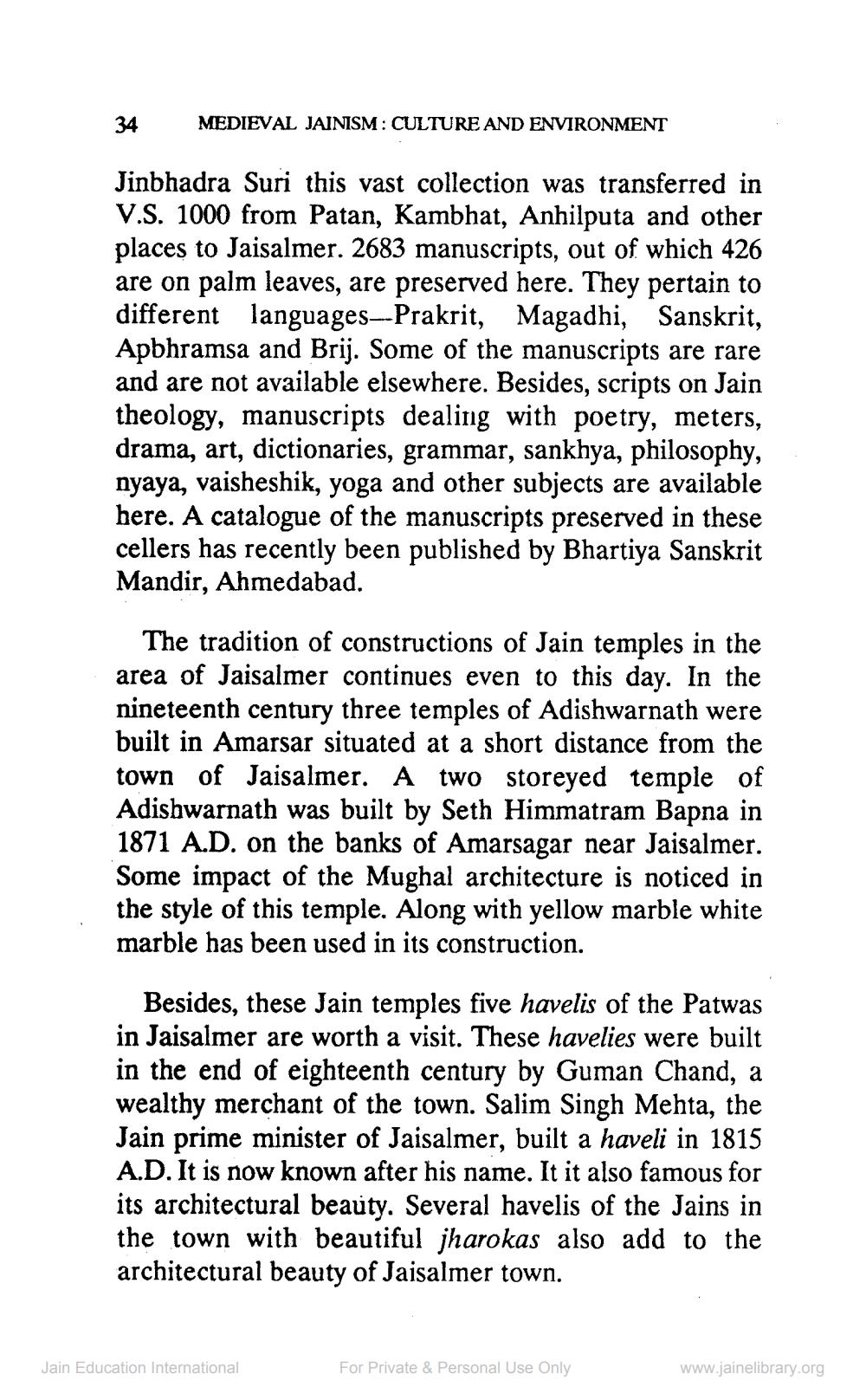________________
34
MEDIEVAL JAINISM: CULTURE AND ENVIRONMENT
Jinbhadra Suri this vast collection was transferred in V.S. 1000 from Patan, Kambhat, Anhilputa and other places to Jaisalmer. 2683 manuscripts, out of which 426 are on palm leaves, are preserved here. They pertain to different languages-Prakrit, Magadhi, Sanskrit, Apbhramsa and Brij. Some of the manuscripts are rare and are not available elsewhere. Besides, scripts on Jain theology, manuscripts dealing with poetry, meters, drama, art, dictionaries, grammar, sankhya, philosophy, nyaya, vaisheshik, yoga and other subjects are available here. A catalogue of the manuscripts preserved in these cellers has recently been published by Bhartiya Sanskrit Mandir, Ahmedabad.
The tradition of constructions of Jain temples in the area of Jaisalmer continues even to this day. In the nineteenth century three temples of Adishwarnath were built in Amarsar situated at a short distance from the town of Jaisalmer. A two storeyed temple of Adishwarnath was built by Seth Himmatram Bapna in 1871 A.D. on the banks of Amarsagar near Jaisalmer. Some impact of the Mughal architecture is noticed in the style of this temple. Along with yellow marble white marble has been used in its construction.
Besides, these Jain temples five havelis of the Patwas in Jaisalmer are worth a visit. These havelies were built in the end of eighteenth century by Guman Chand, a wealthy merchant of the town. Salim Singh Mehta, the Jain prime minister of Jaisalmer, built a haveli in 1815 A.D. It is now known after his name. It it also famous for its architectural beauty. Several havelis of the Jains in the town with beautiful jharokas also add to the architectural beauty of Jaisalmer town.
Jain Education International
For Private & Personal Use Only
www.jainelibrary.org




